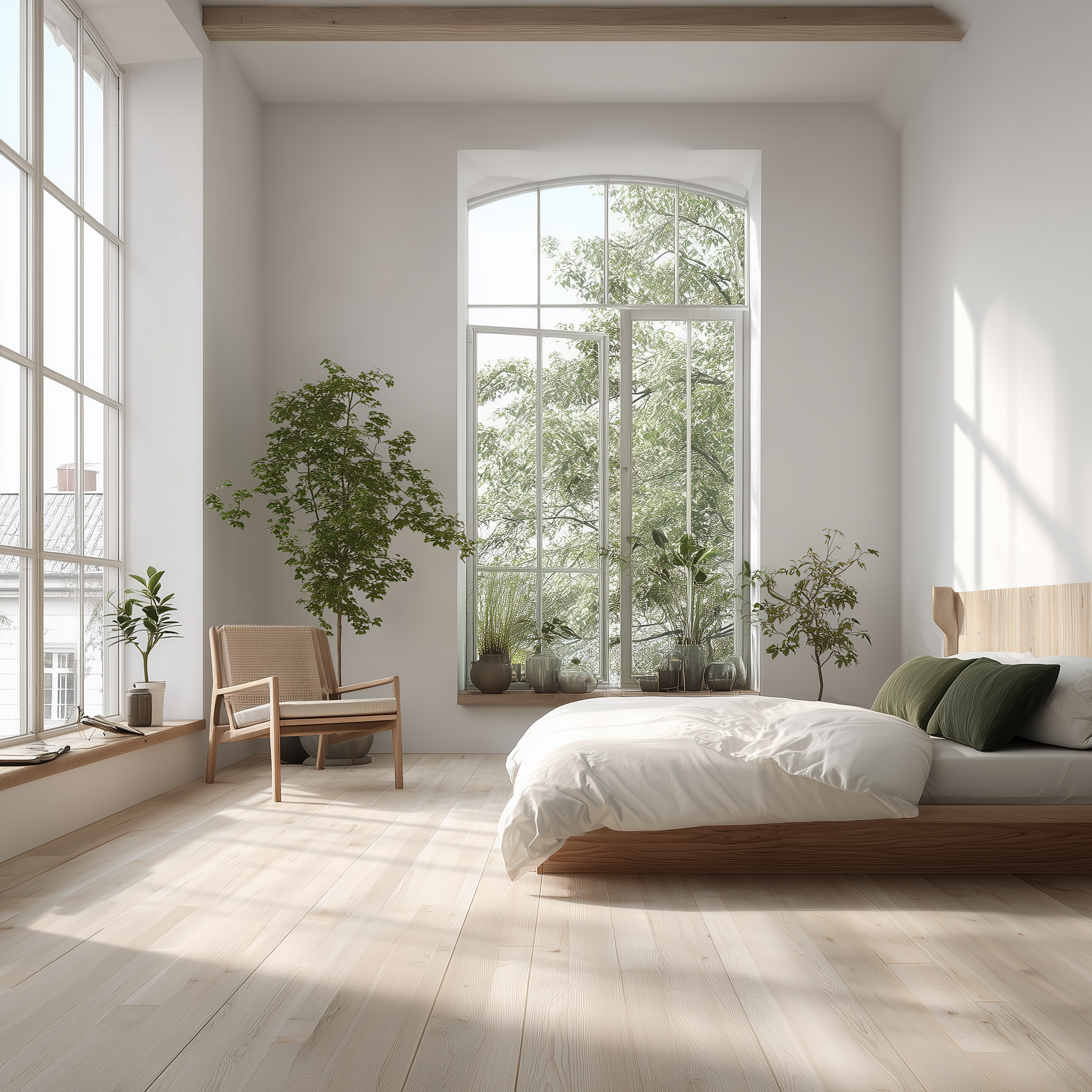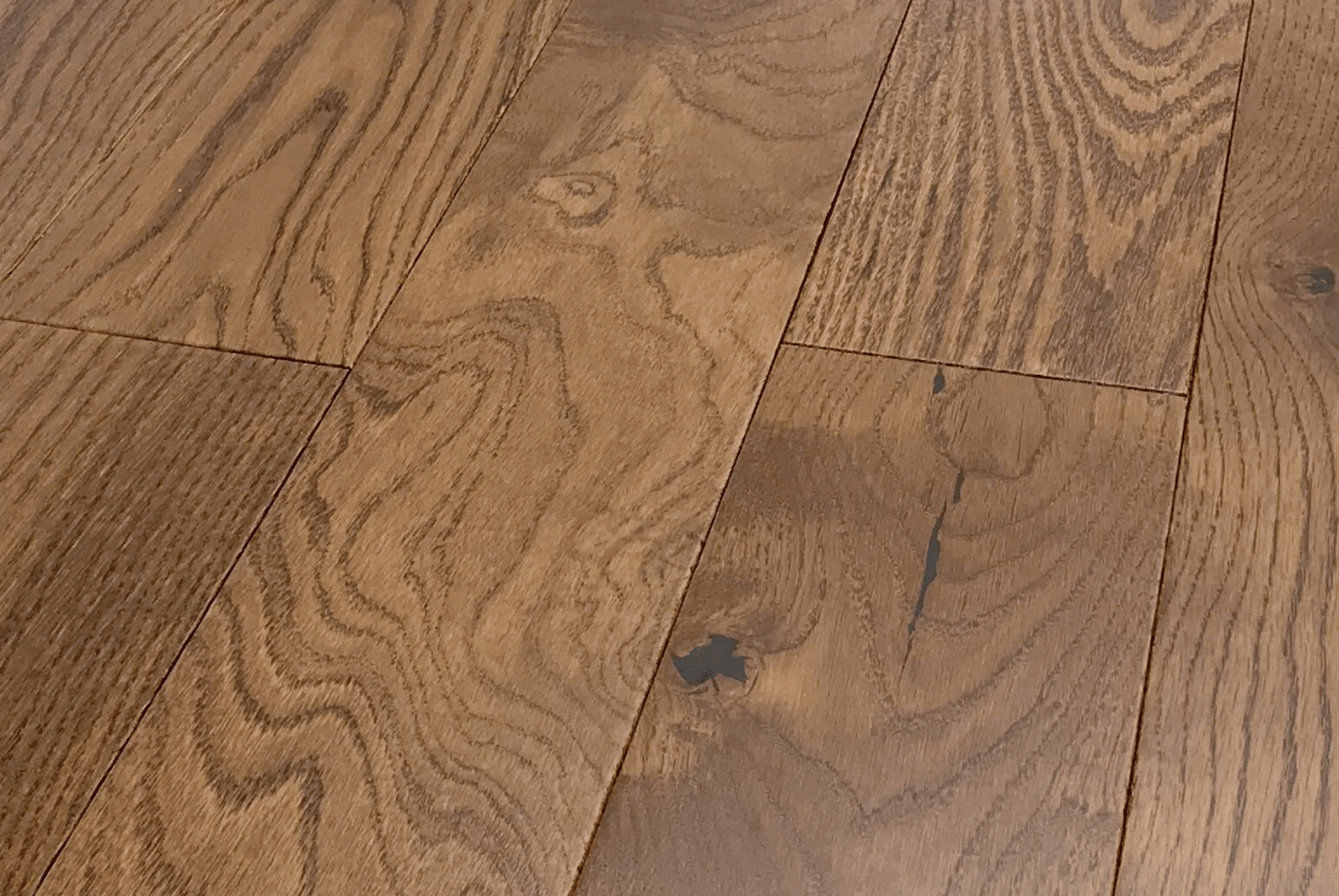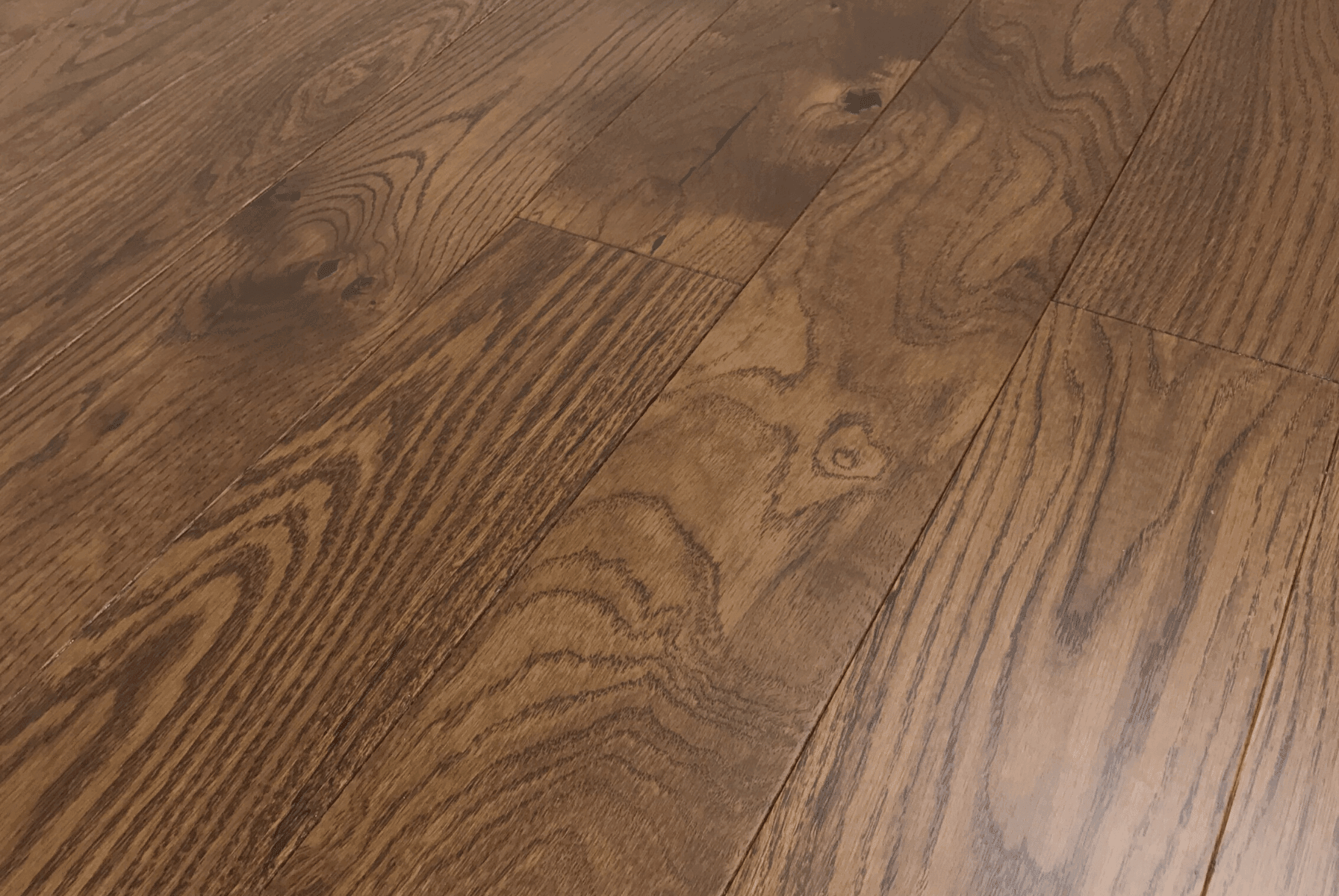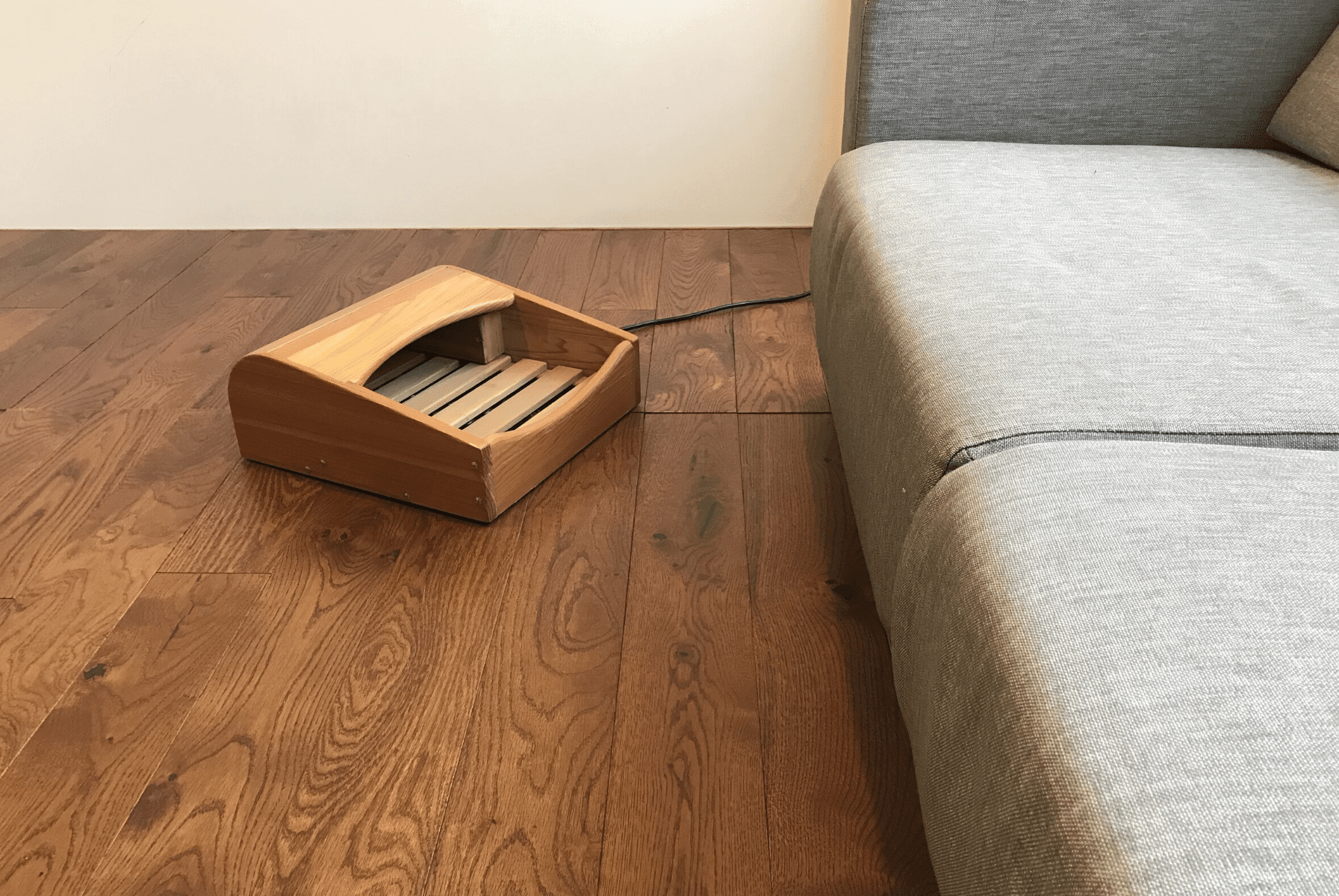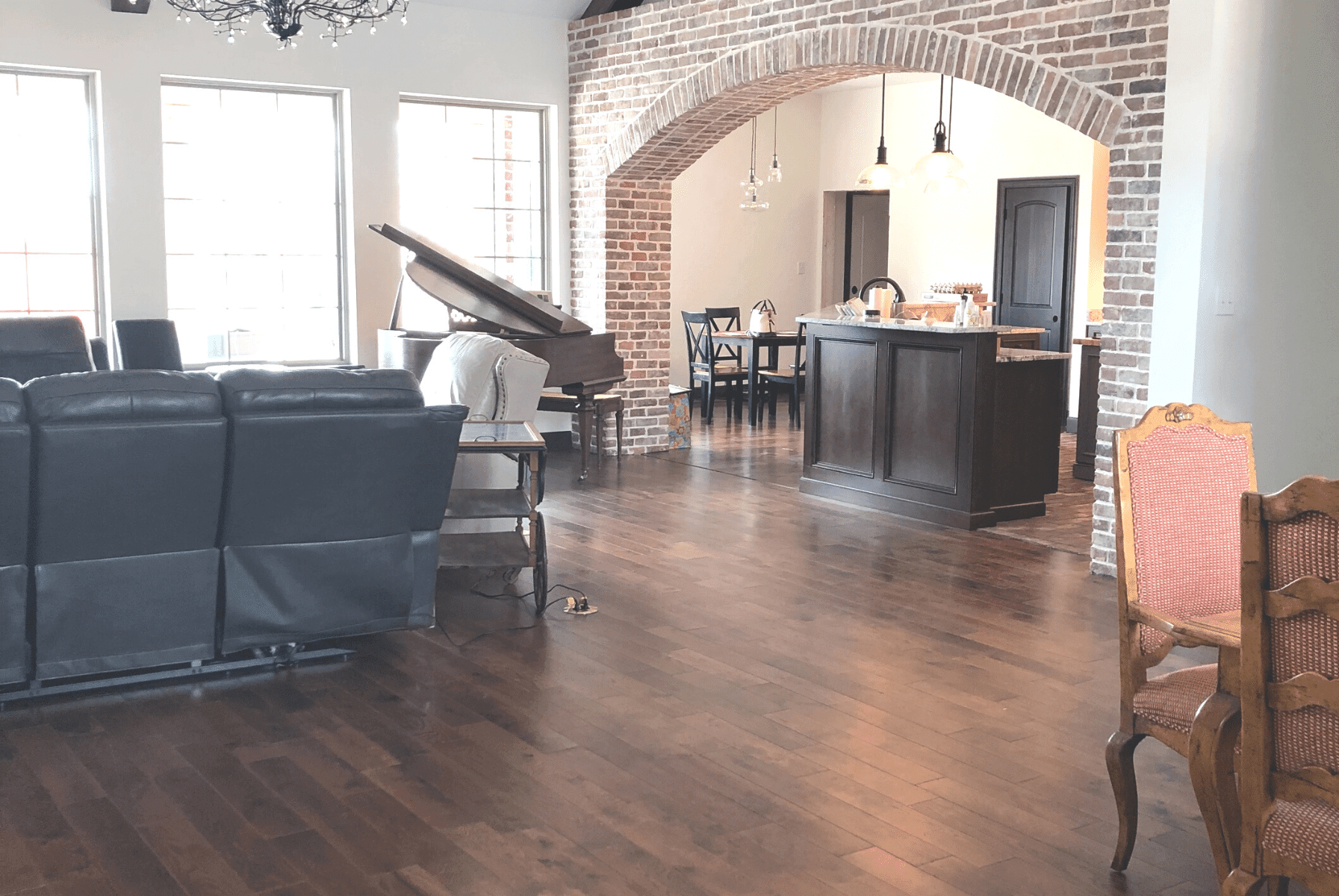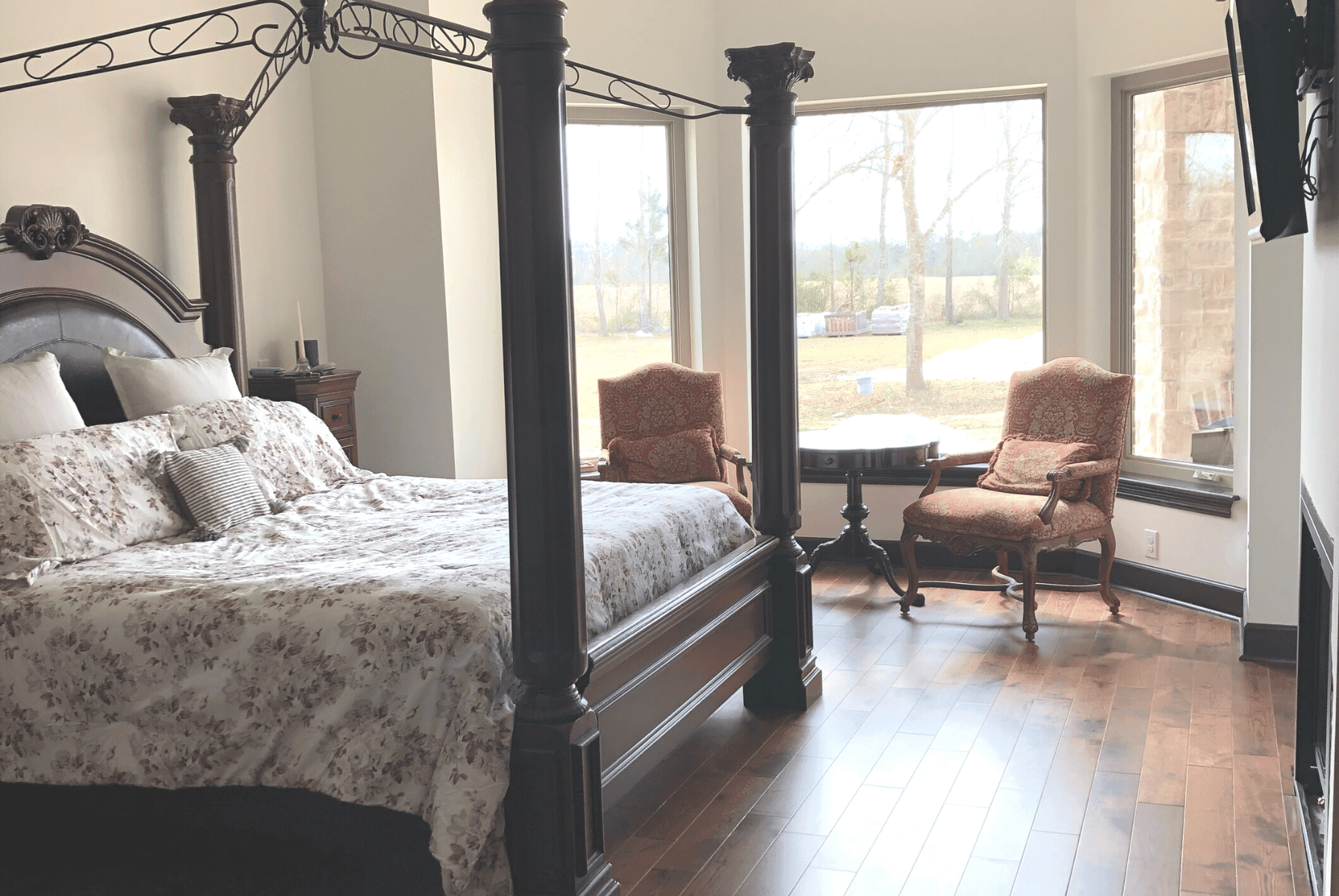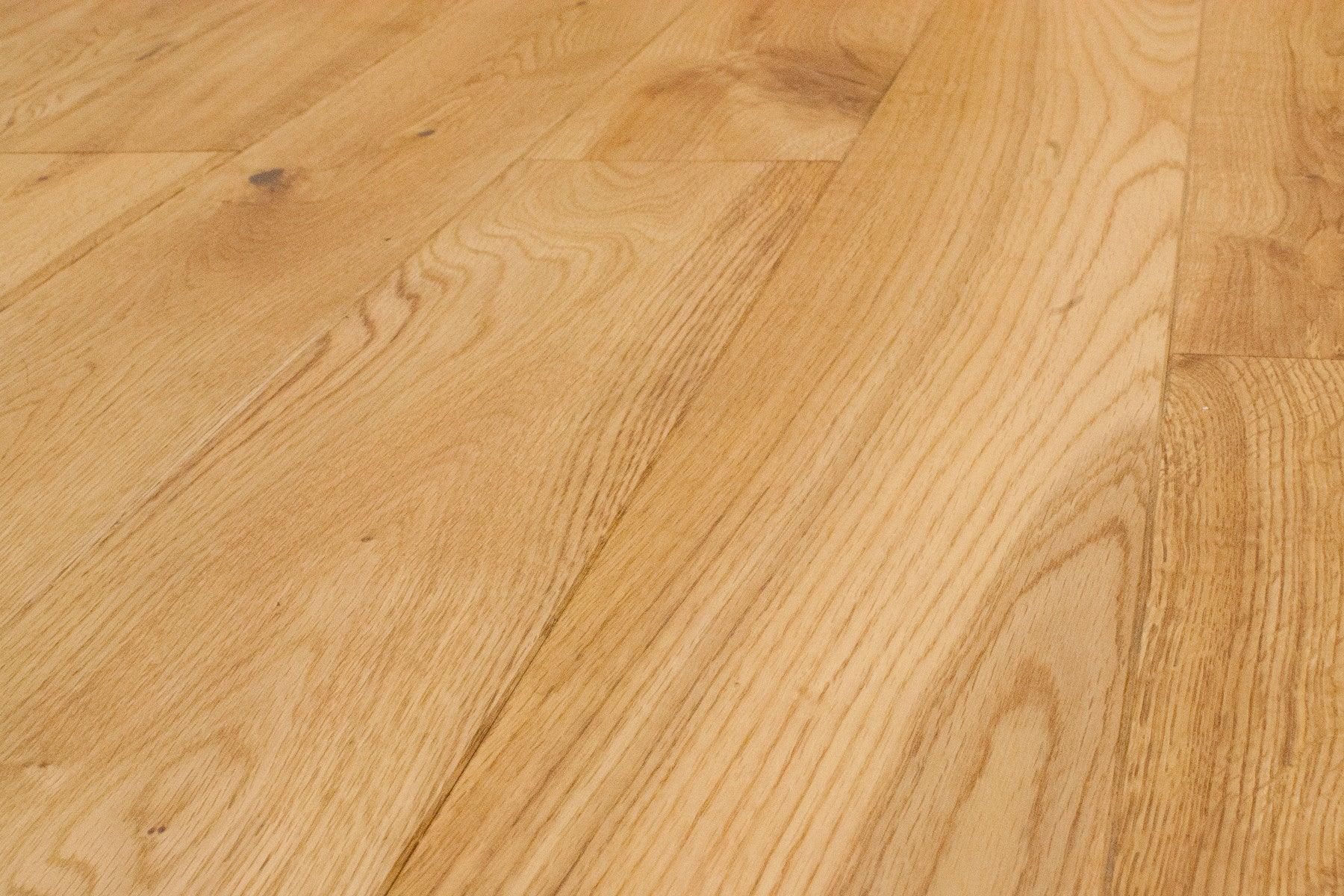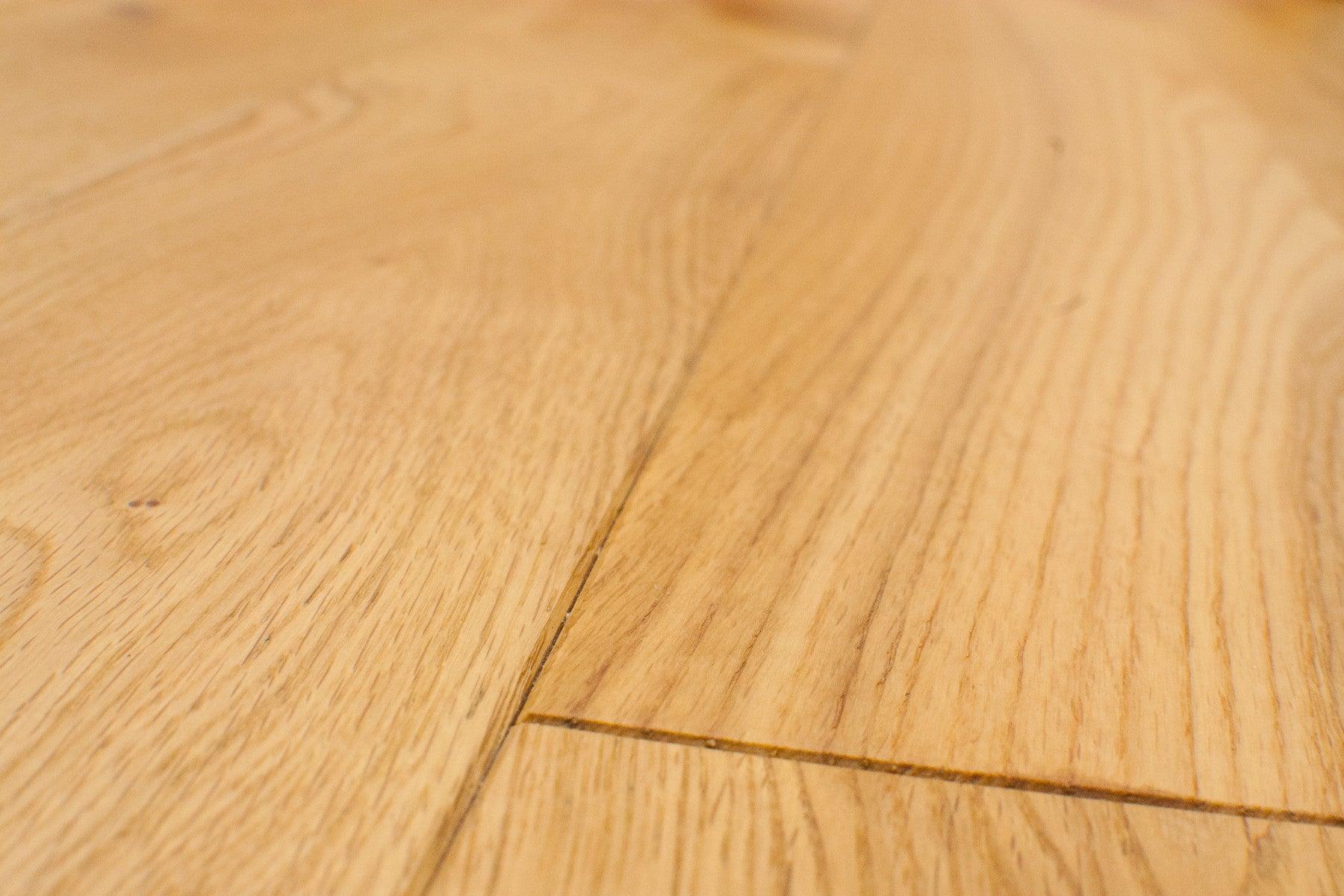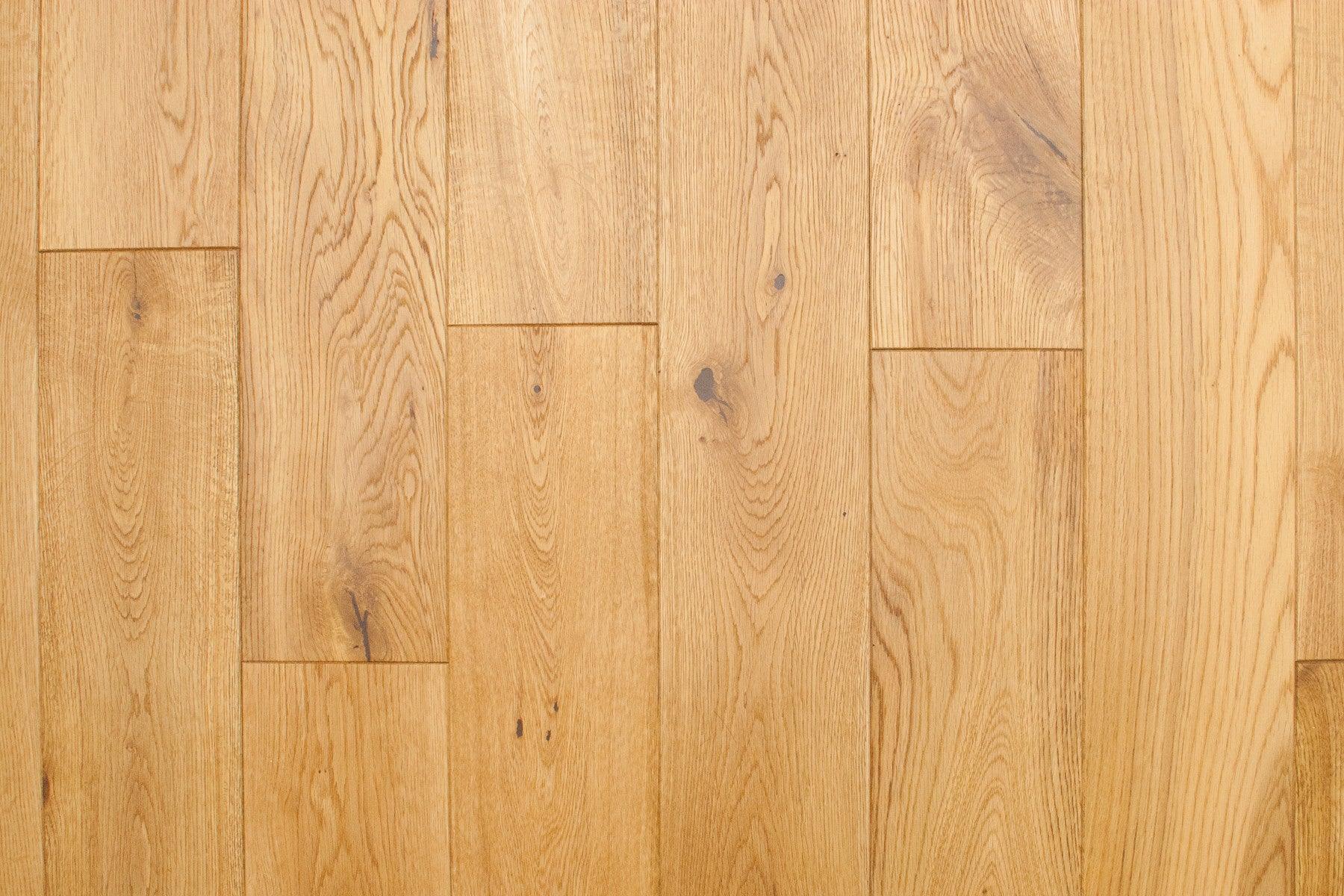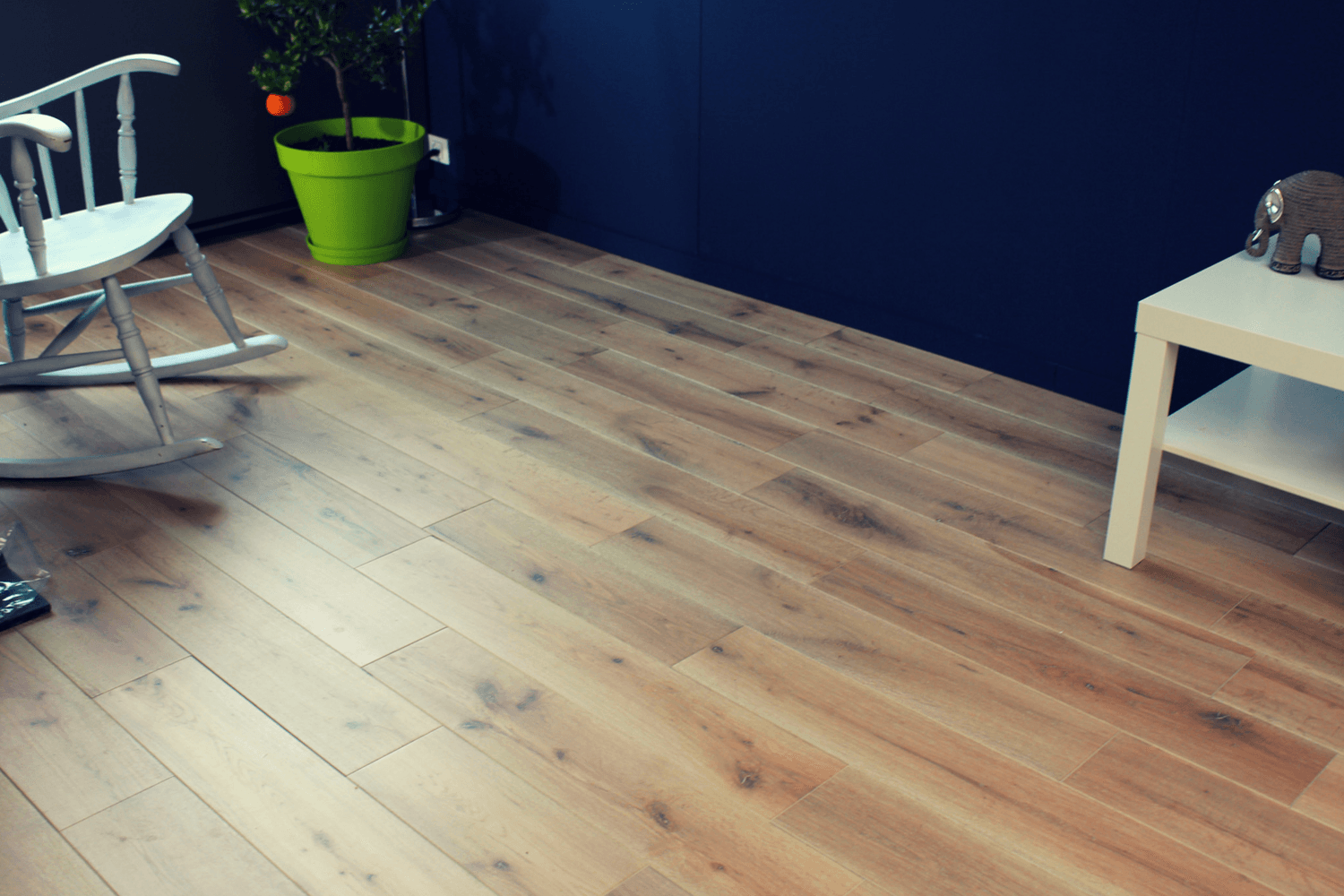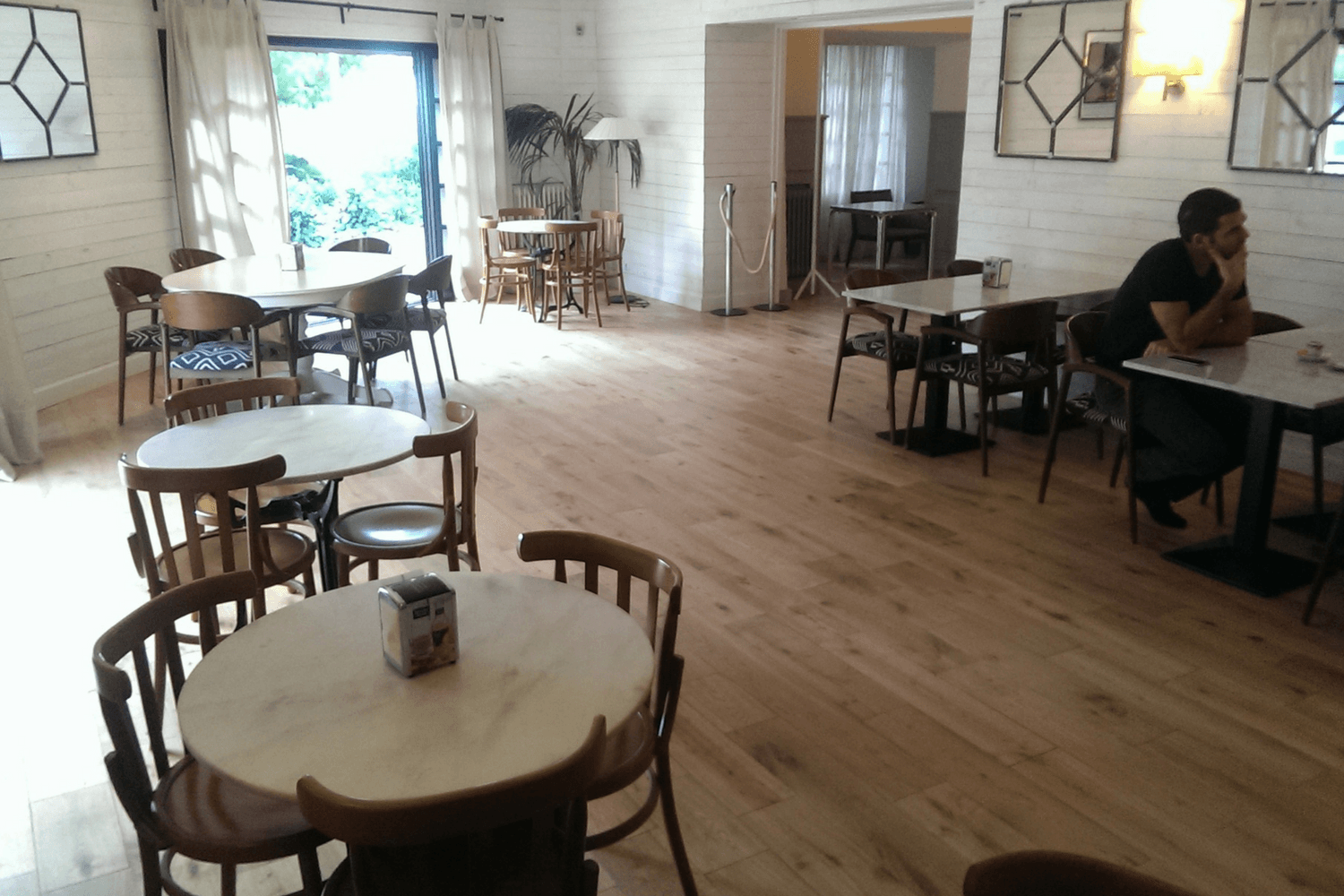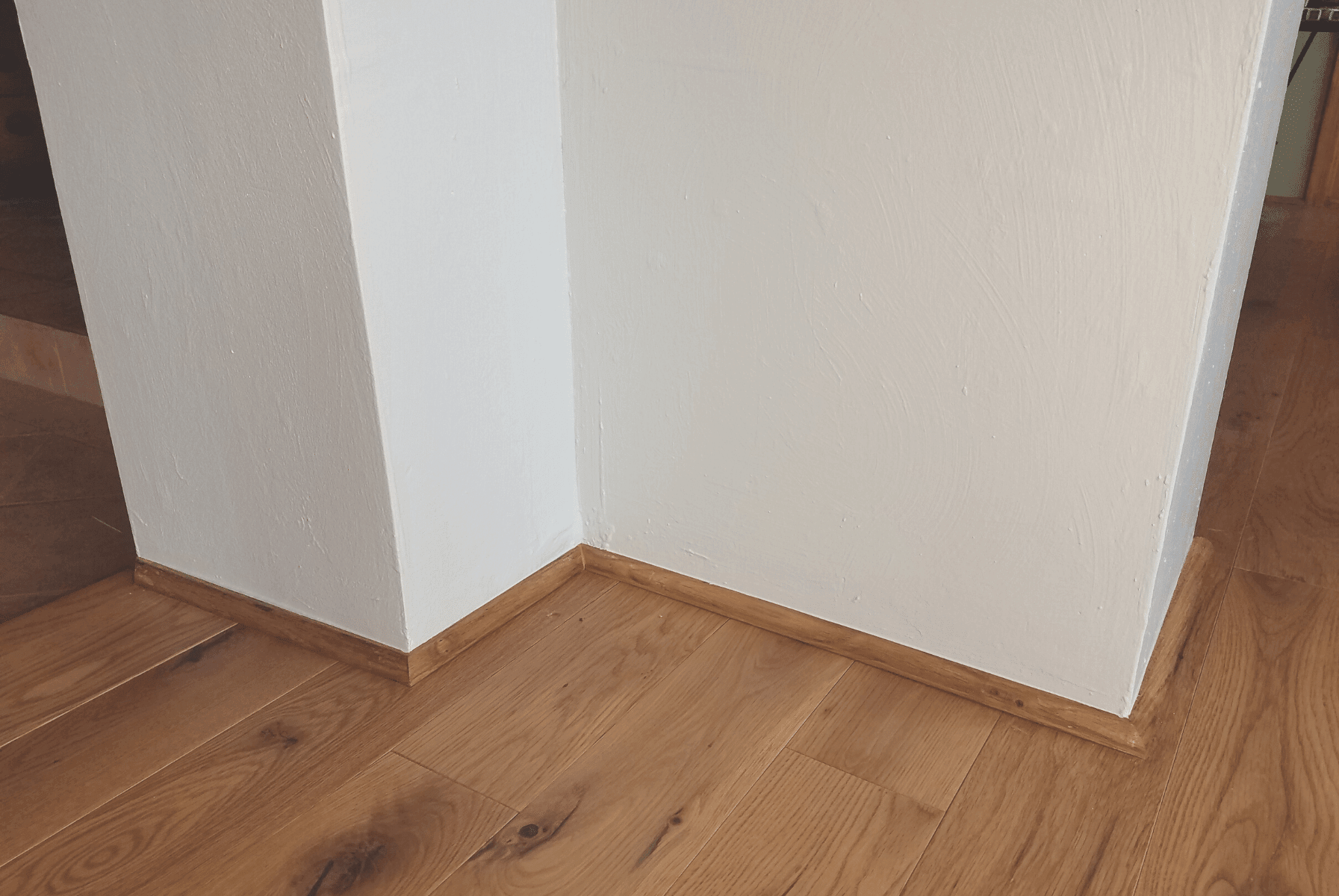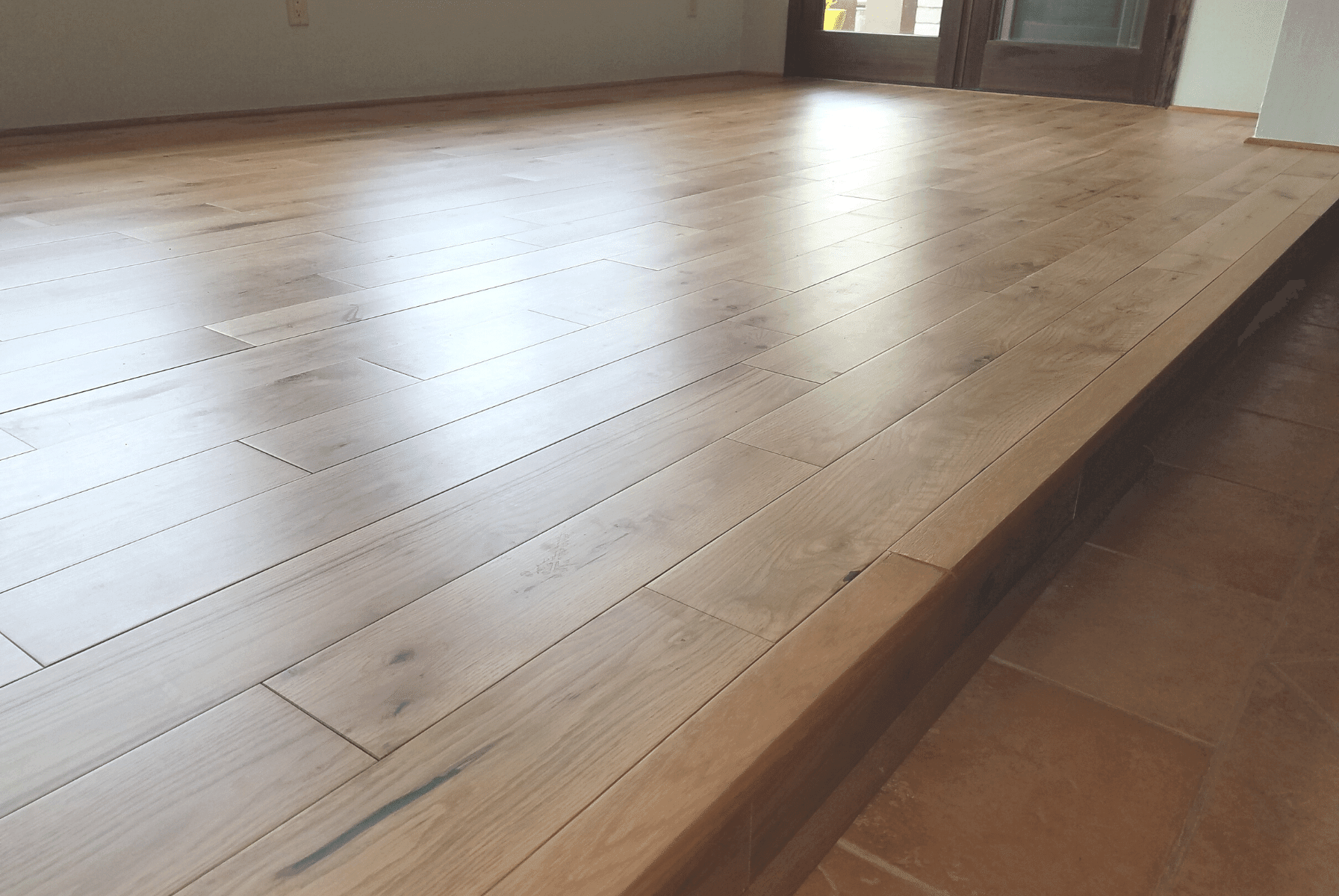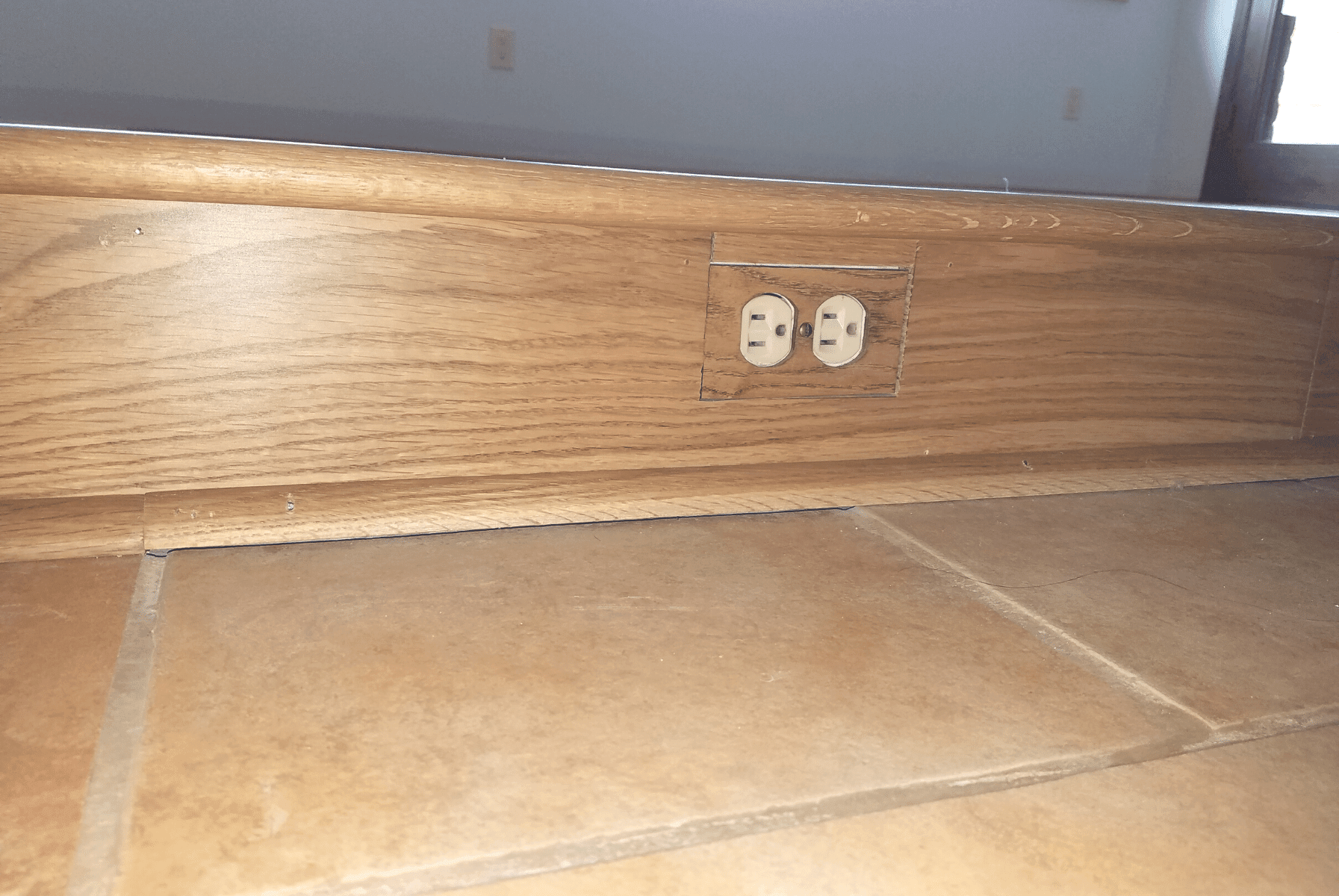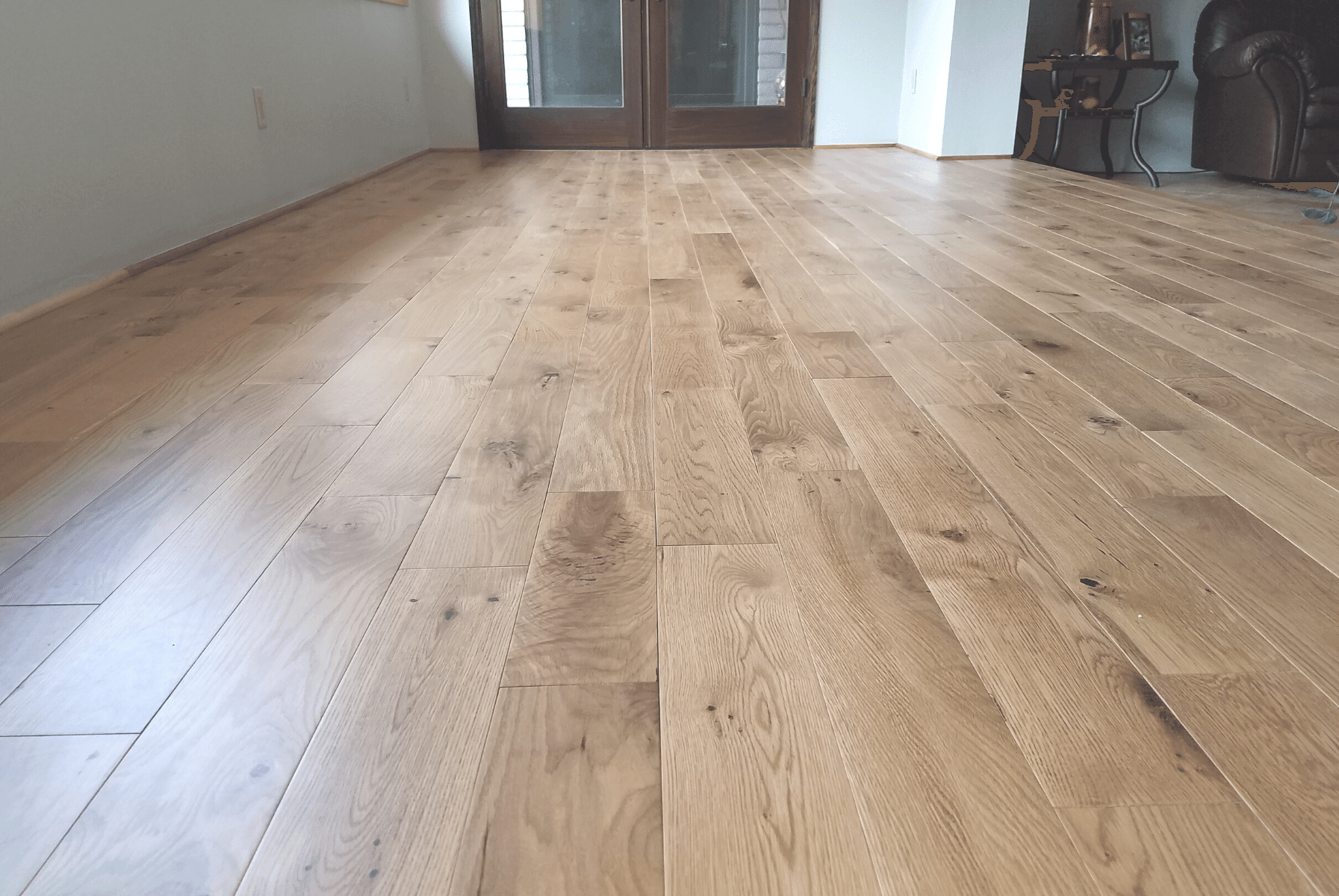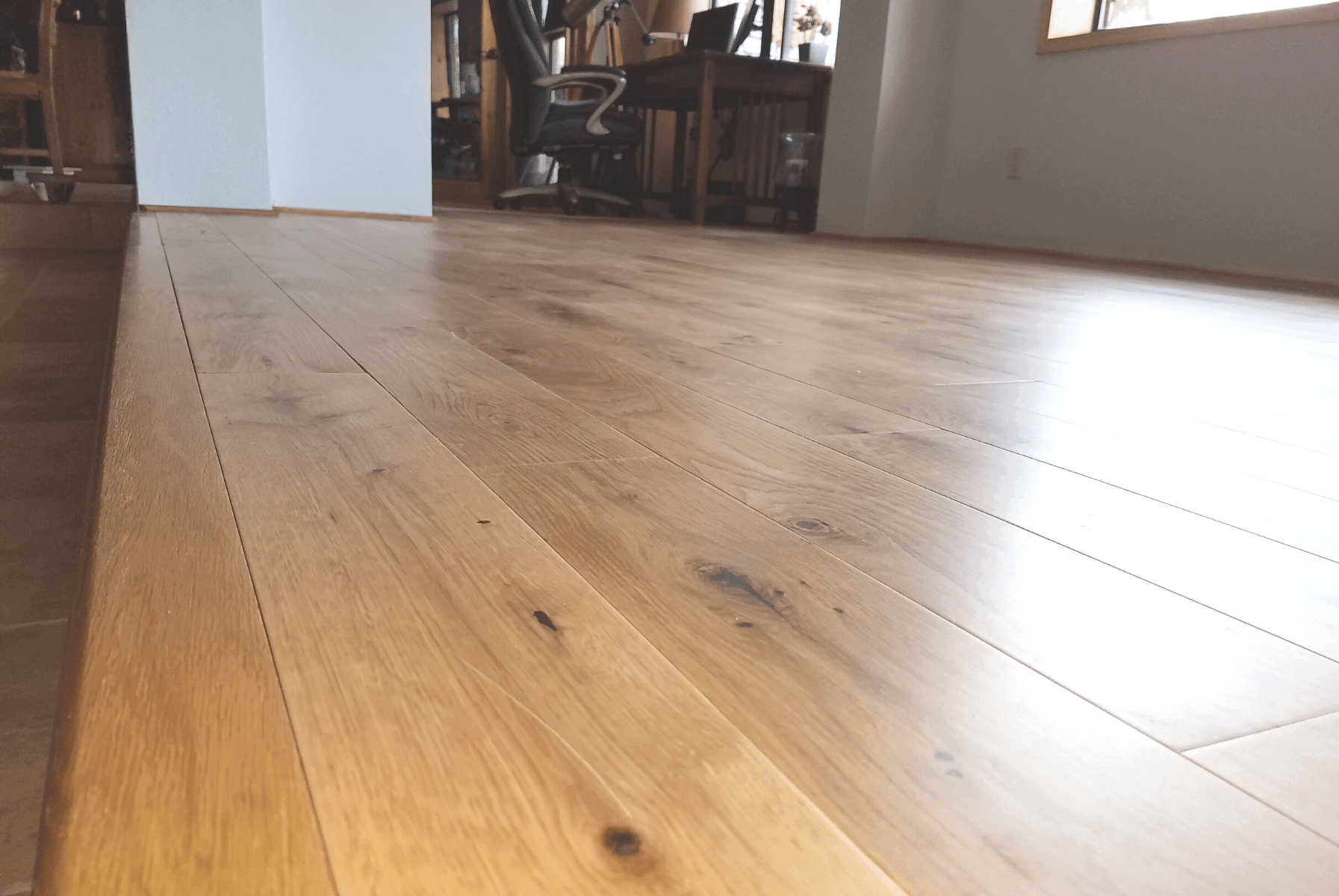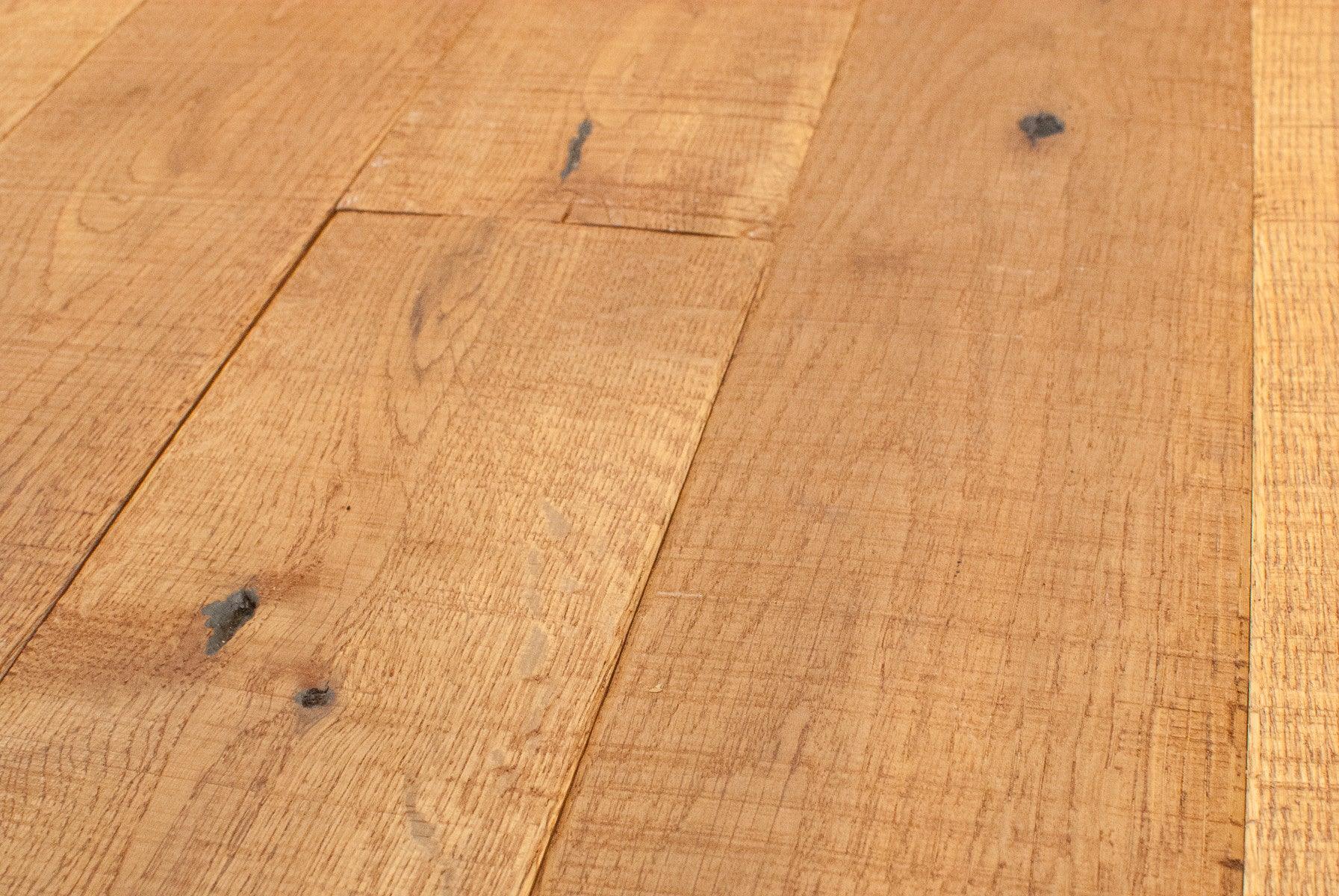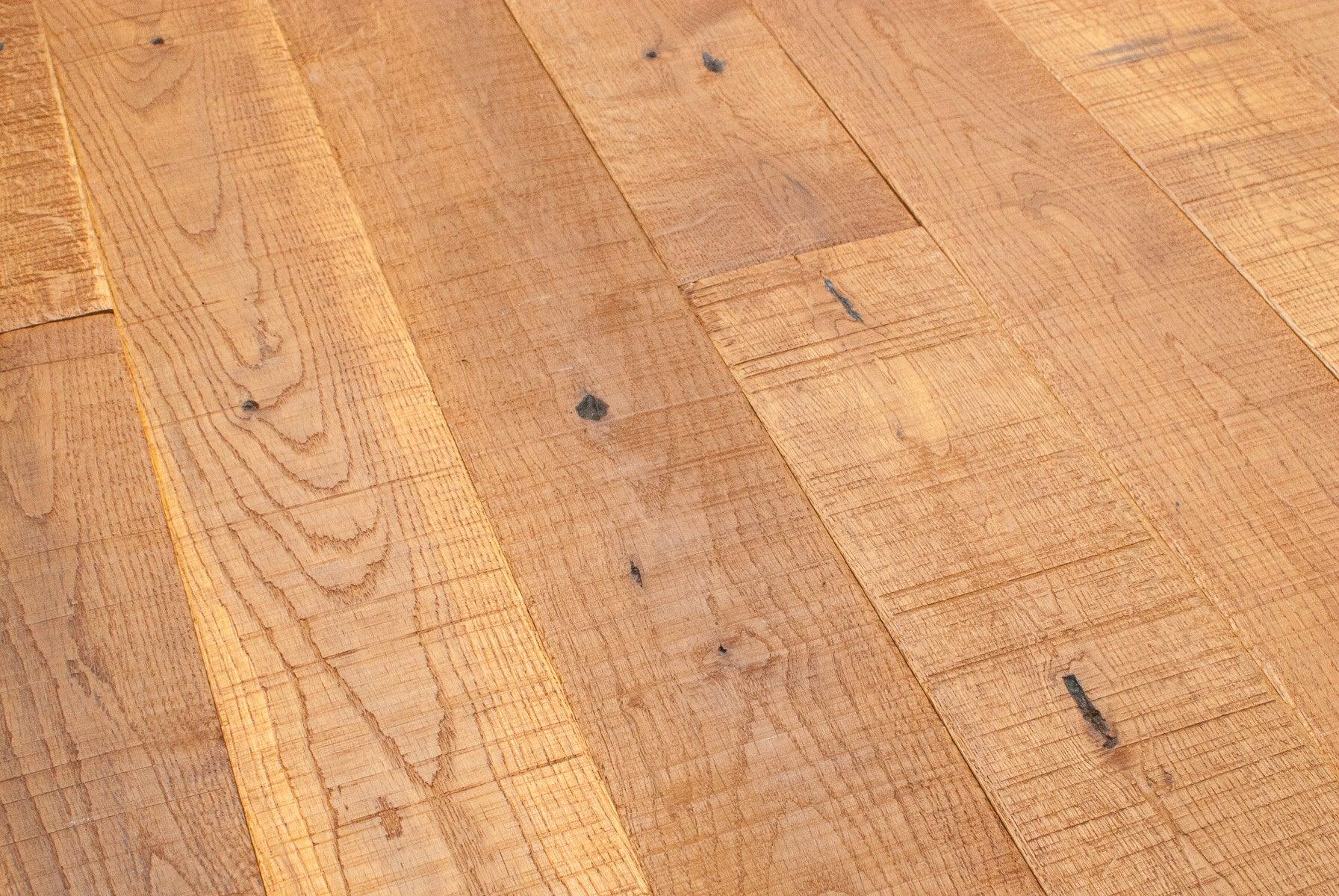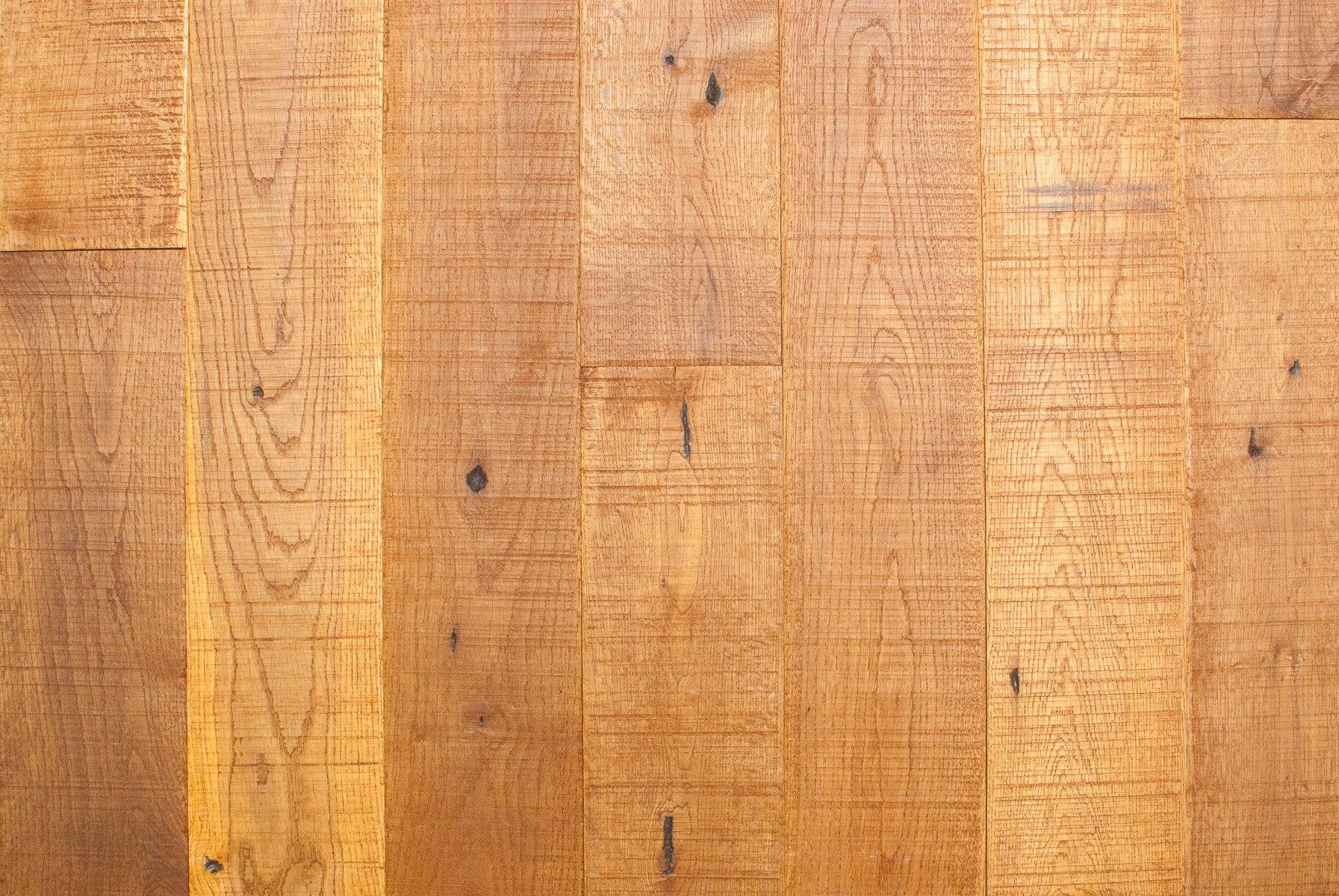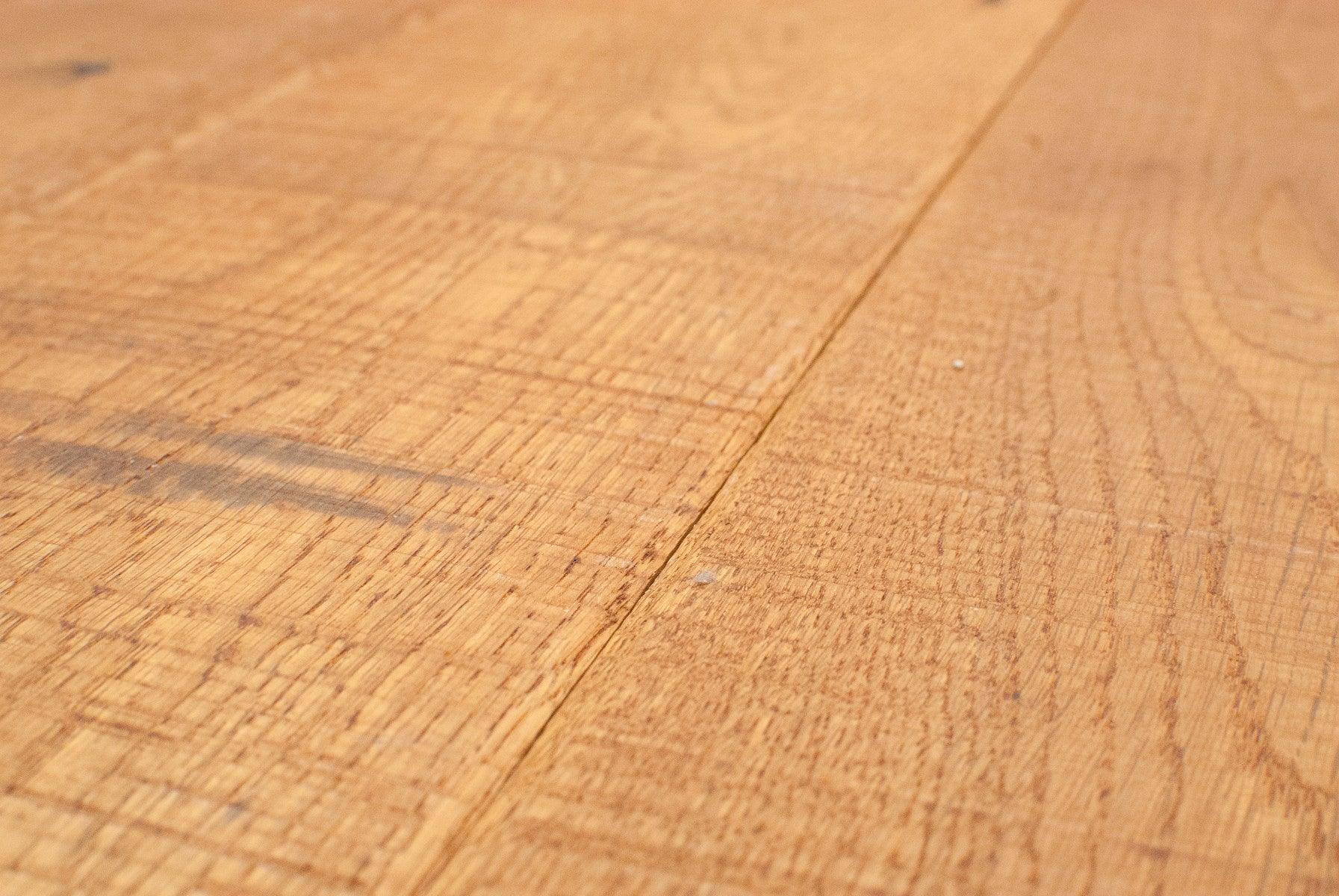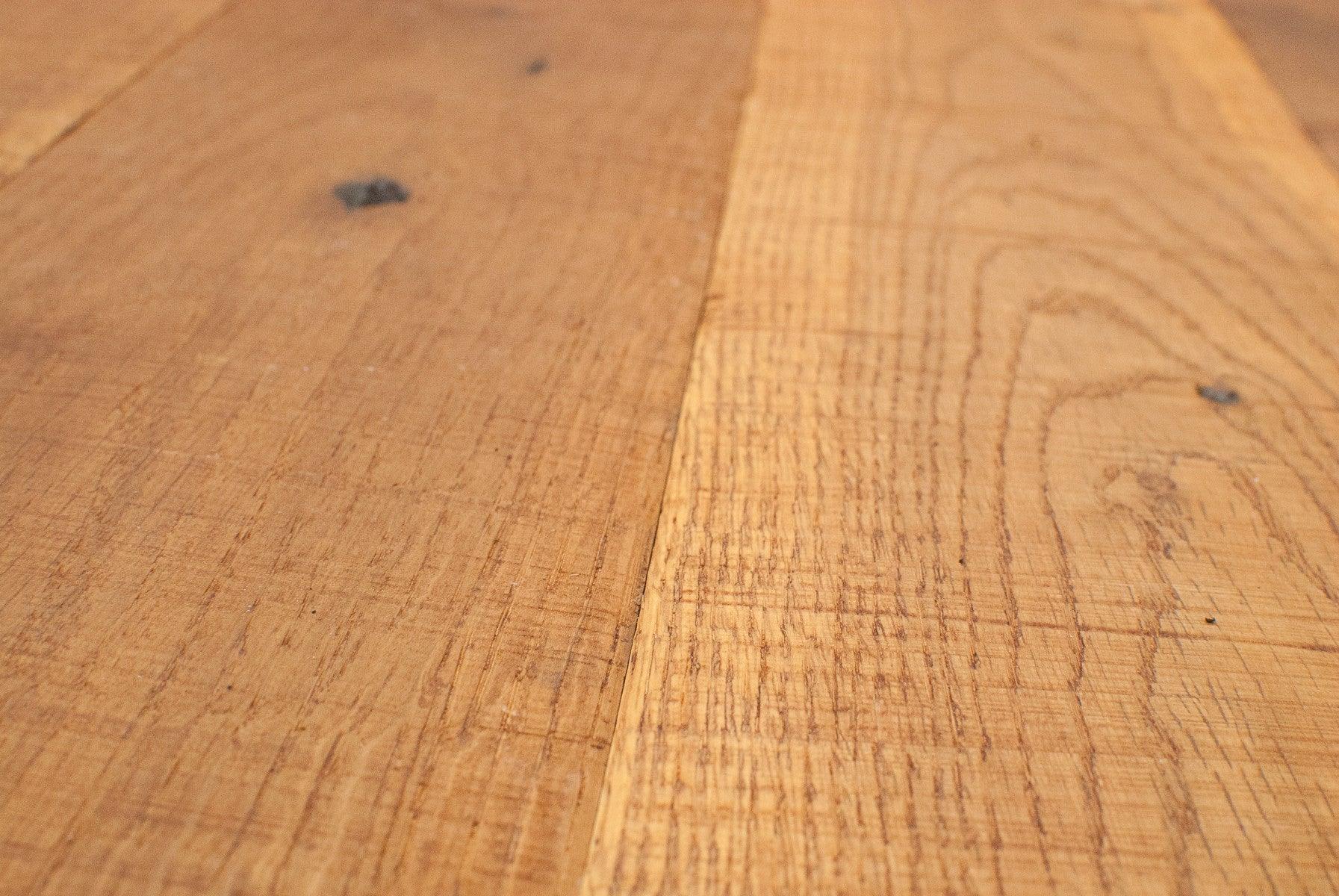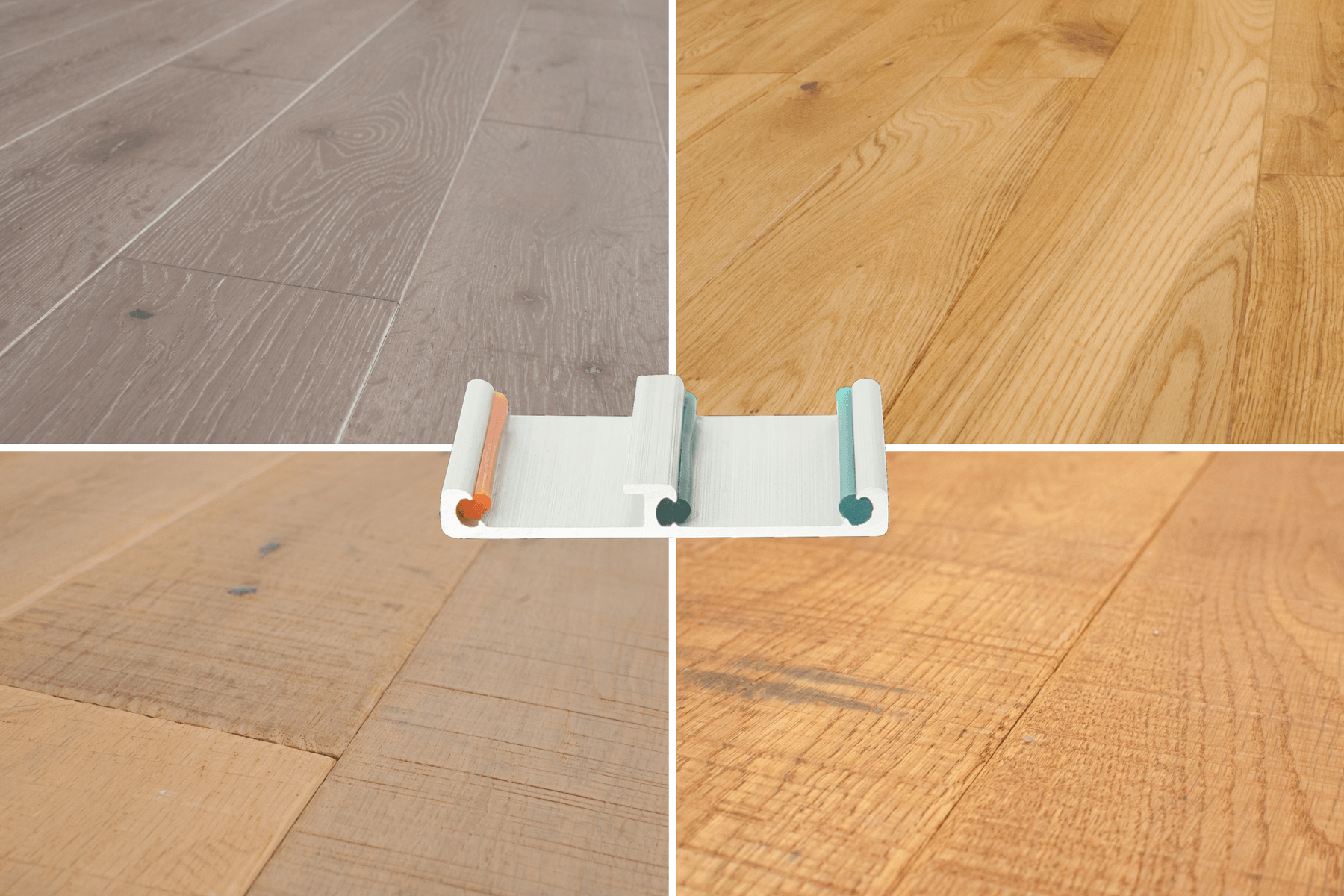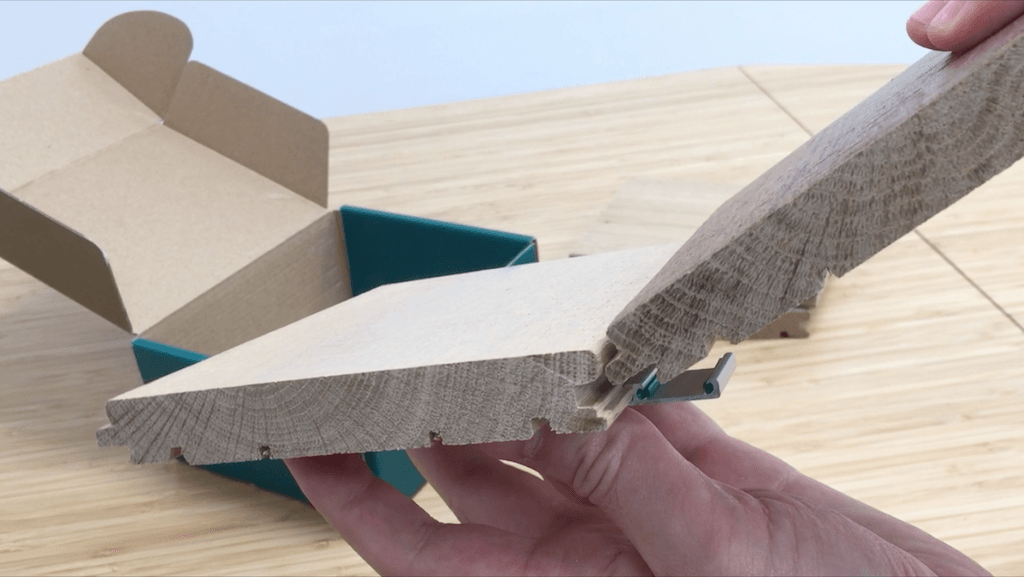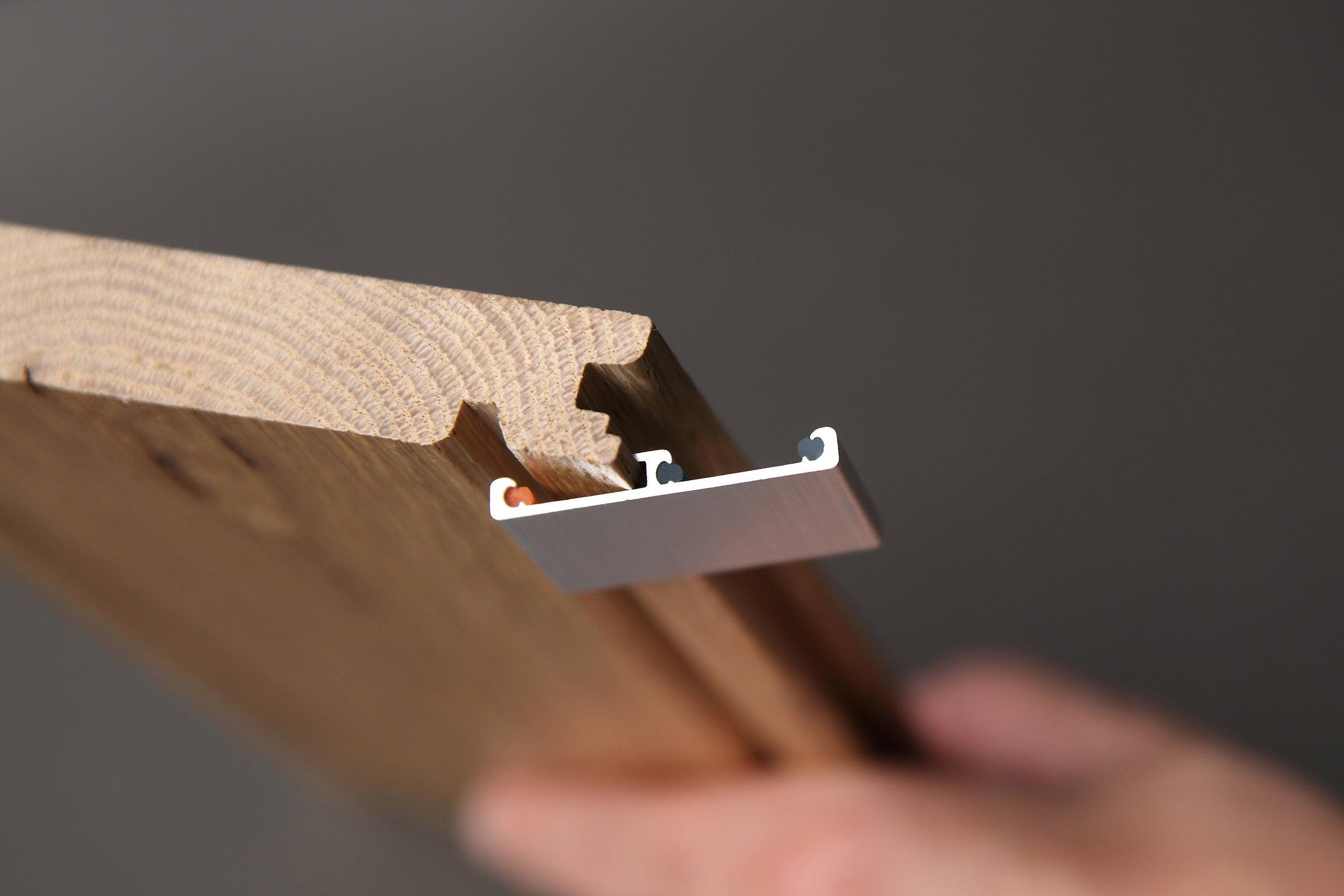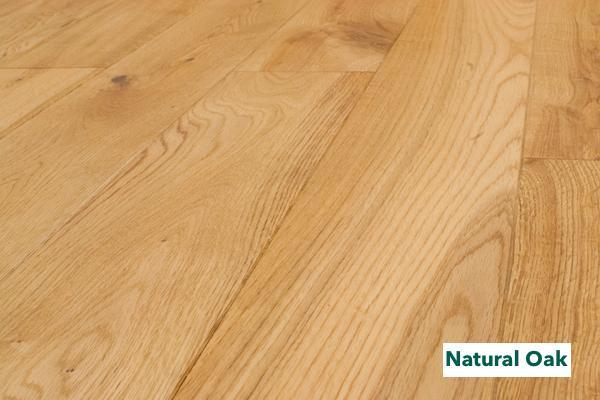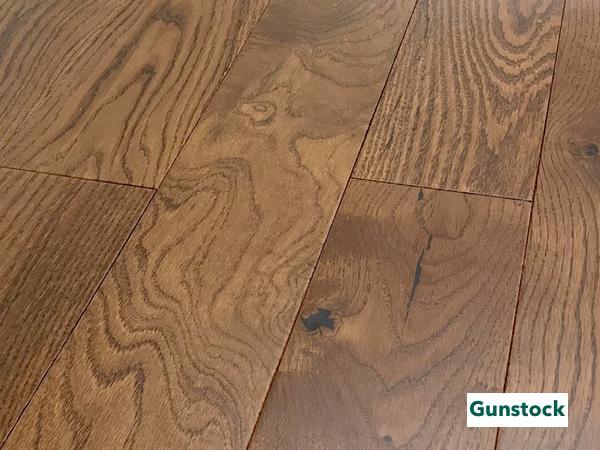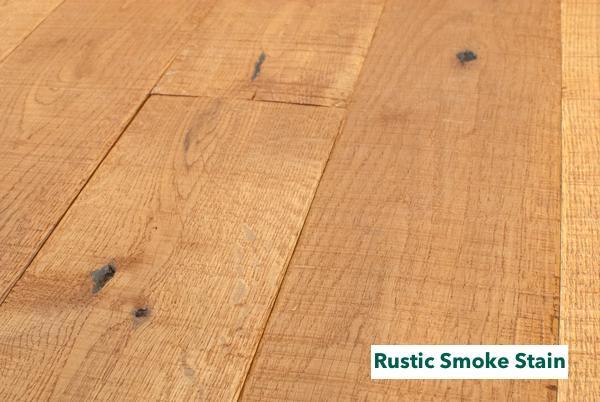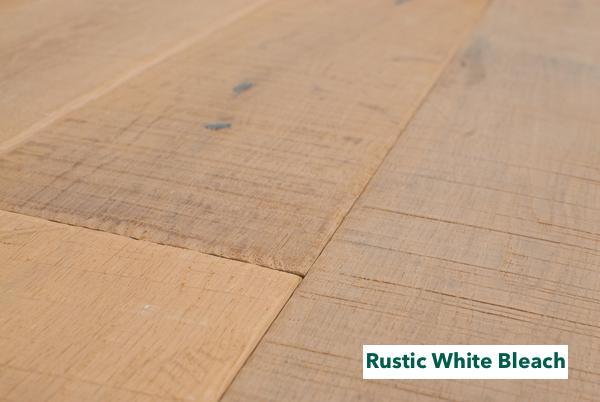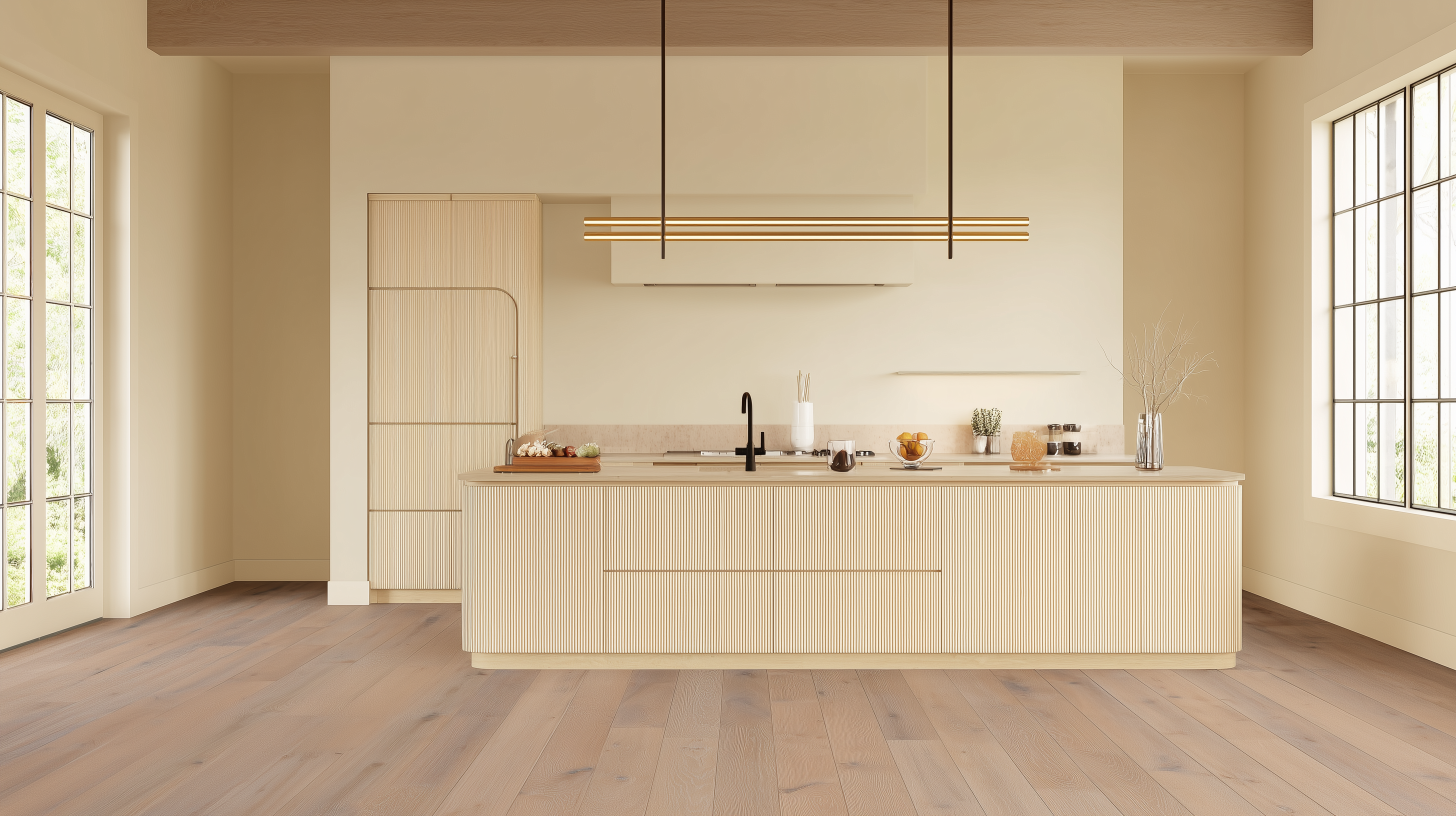Choosing the right floor can feel like a balancing act between beauty, durability, and budget. Each option, vinyl and laminate, brings its own strengths and tradeoffs. In this guide, we’ll break down vinyl vs laminate flooring so you can decide which material best fits your space, lifestyle, and long-term plans.
Steve and Katy decided to buy a fixer-upper and flip it for a profit. They found a lovely ranch in a decent neighborhood, 1,800 square feet, 3 bedrooms, and 1.5 baths. As they pulled into the driveway, they could see the exterior needed some paint, landscaping and the roof looked good.
When they opened the front door, they got a surprise. There was no carpet, tiles, or hardwood in the living room, only the OSB (Oriented Strand-Board) subfloor.

Now they had a decision to make. Since hardwood floors will cut into their slim profit, their next viable option is to choose between vinyl vs laminate flooring. These look almost identical. The cost and installation for both are about the same. So, which floor should Steve and Katy choose?
Keep reading to discover the differences, pros, and cons between vinyl vs laminate flooring.
The Differences Between Vinyl and Laminate Flooring
The couple knew that this house would most likely have kids and dogs due to the family-friendly neighborhood. They needed flooring that will withstand dog claws, running kids, and spilled drinks. To make the decision, they needed to understand the makeup of each flooring product.
How Are They Made?
Vinyl and laminate flooring are two different materials requiring two unique manufacturing processes.
Vinyl Flooring
Vinyl flooring, sometimes called resilient flooring, is all synthetic material. The base layer of standard vinyl sheets and tiles is usually fiberglass coated in PVC vinyl and a plasticizer. The top is a graphic print of stone, ceramic tile, wood, or other design, embossed for texture. The textured surfaces simulate different materials, and polyurethane protects the surface.
Vinyl comes in sheets or planks with sheets about 1.5 mm thick and rigid planks up to 5 mm. Generally, the thicker products are of higher quality, have more extended warranties, up to 15 years, and cost more.
Laminate Flooring
The primary difference with laminate flooring is that the core uses wood by-products bonded with epoxy-type resins. Laminate flooring looks like luxury vinyl planks because both use a printed design layer, protected by a hard, transparent plastic wear layer.
Laminate flooring is a bit stiffer. Individual planks have interlocking edges that snap together. The thickness of laminate flooring planks ranges from 6 mm to 12 mm.
Appearance and Styling
There isn't much difference in the appearance between these flooring materials of the same grade. Both flooring materials recreate realistic three-dimensional embossing on their surfaces. You can buy accurate images of wood, ceramic, or stone to complement any decor.
Luxury vinyl plank flooring has a thicker solid core and deeper, more realistic texture embossing. The texture recreates the feel and appearance of real wood grain texture.
Laminate flooring offers texturing in more options like hand-scraped hardwood, stone, ceramics, and other materials.
Water Resistance or Waterproof?
If you plan to install in an area of high humidity or potential moisture, avoid laminate flooring. The core is mostly wood which will swell up and delaminate if exposed to moisture for a long time. Replacement is the only option if it swells up. It's best to use laminates in low moisture areas and where you can pick up spills quickly.
Vinyl flooring is 100% synthetic material. It can be fully immersed in water, dried out, and utterly unaffected like nothing happened. Vinyl is the right choice for bathrooms or mudrooms.
This video, "Laminate vs Vinyl Flooring," provides a visual overview of these flooring materials' construction and cross-sections.
Insulation Value
Insulation keeps the temperature from moving from one place to another. We measure it as an "R-value." The higher the R-value, the better the insulation. For example, a 1-inch thick slab of Styrofoam (extruded polystyrene) has an R-value of 5.
For comparison, wool carpet's R-value is 4.2, plywood is 1.0, Vinyl Composition Tile (VCT) is 1.6, and laminate flooring is 2.35. Laminate wins over vinyl when it comes to keeping your toes warm.

Vinyl vs Laminate Flooring Pros and Cons
Let's say that you are standing in the middle of your newly remodelled home. All the floors are bare, stripped down to clean, and level sub-floors. On the one hand, you've got a sample of vinyl flooring, and on the other, you have a laminate plank. To choose the best one, we'll make a list of pros and cons for comparison. You might need both depending on the room.
Keep in mind, we compare a vinyl product that's 12mm thick and comes in planks that snap together. We're not comparing the roll-out sheets of vinyl.
Vinyl Plank Flooring – The Pros
- Waterproof – Vinyl is synthetic and petroleum-based. Water can't damage the floor.
- Greater Design Choices – Newer vinyl flooring is available in a variety of colors and styles. Manufacturers are offering more patterns and designs, including realistic visuals that mimic wood and stone.
- Durable and Quieter - Vinyl stands up to heavy foot traffic. Because it's softer, it helps reduce footfall noise. It's an ideal choice for families with pets and children.
- More Comfortable - Vinyl provides additional comfort for your feet because it's softer than rigid floor materials like hardwood and tile.
- Easy to Clean – You can clean vinyl with a vacuum and a damp mop. Use only the types of cleaning solutions approved for vinyl flooring.
Vinyl Plank Flooring – The Cons
- It Is Softer - Vinyl flooring is prone to gouging by sharp objects, like knives, tools, and furniture. Because of this, homeowners must be extra careful when moving and placing furniture.
- Prone to Fading – Vinyl planks that sit under sunny windows will fade. It's not the best for rooms with lots of direct sunlight.
- Shows Sub-Floor Imperfections – Compared to wood or tile, vinyl is considered a soft flooring material. Any defects in the subfloor, including dips, nail heads, bumps, or holes, will show on the surface.
- May Require Adhesives - While some vinyl flooring may snap together, most vinyl floors require glue. It can require a lot of time and trouble to install and remove.
Vinyl flooring is relatively thin and doesn't stand up well to heavy loads. Sharp or falling objects can damage it. Consider the furniture and activities that will occur in the room before choosing to install vinyl flooring.
Laminate Flooring – The Pros
- Looks More Realistic - Laminate is more rigid and can better replicate the look of hardwood, tile, or stone. It's thicker, allowing for deeper embossing with a natural-looking wood grain texture.
- More Durable - It's more durable and long-lasting than vinyl flooring.
- Won't Fade - Laminate resists wear and will not fade when subjected to direct sunlight.
- DIY Friendly - Depending on the bathroom's size, the average DIYer can install all the laminate flooring, moldings, and trim pieces in one weekend.
- Easy to Clean - Clean laminate floors with a damp mop and mild cleaning solution. Dry up standing water immediately.
If your family tends to drop things like curling irons or hairdryers, laminate flooring will not dent or scratch as easily as vinyl can.
Laminate Flooring – The Cons
- It's Not Wood – It may look like wood from a distance, but laminate is not the real deal. Unlike a hardwood floor, it does not add much to the home's resale value. It cannot be sanded and refinished for a fresh appearance, and you must replace it if it gets damaged or scratched.
- Can Be Slippery When Wet - Keep a rug next to the bath or shower.
- Water Can Ruin It - The most significant disadvantage is that if water seeps into the seams, it can swell the wood core. If that happens, you'll need to replace it.

Laminate flooring can warp if it stays wet. If you want a worry-free floor in the bathroom, vinyl will be the best choice.
Which One is Better for Wet Areas Like Kitchens or Bathrooms?
Stay away from laminate flooring if you have full bathrooms and wet basements. Depending on the traffic in your kitchen, you can go with either one. For wet floors, you'll want vinyl for a carefree floor.
What's Best for Living and Dining Rooms?
Since water is not an issue for these rooms, either vinyl or laminate will work for living and dining room spaces. Laminate has the durability that families with kids and pets need. However, luxury vinyl is also quite durable, comes in both wood and tile patterns to match any decor. The choice comes down to budget and style.
Vinyl vs Laminate Flooring for Your Rooms
Let's look at the separate spaces in the home to see if one flooring may be a better choice over the other.
|
Living Space |
Vinyl |
Laminate |
|
Entry Ways |
✔ |
✔ |
|
Formal Living Rooms and Dining Rooms |
✔ |
✔ |
|
Recreational, Mud, and Utility Rooms |
✔ |
X |
|
Home with pets |
X |
✔ |
|
Kitchens |
✔ |
✔ |
|
Bathrooms |
✔ |
X |
|
Bedrooms |
✔ |
✔ |
For wet zones, choose vinyl. In high traffic areas and where aesthetics count, laminate will be the better choice.
Vinyl vs Laminate Flooring with Pets
Both vinyl and laminate are easy to clean and stand up well to dog claw scratches. Stick with waterproof vinyl if you have dogs or other pets that routinely spill their water or make other wet messes. Choose a matte finish that will hide scratches better than a glossy finish.

Vinyl vs Laminate Flooring Cost
Both laminate flooring and vinyl flooring are typically less expensive than natural hardwood, engineered wood, and many ceramic or porcelain tiles.
According to Home Depot, the average total project cost to install laminate flooring with an underlayment is between $3.80 and $4.80 per sq. ft. Their laminates run 8 to 10 mm thick. However, depending on the manufacturer, the price per square foot can be as high as $8.
Most estimates for vinyl installation and material costs range from $4 to $6 per sq. ft.
Both types of flooring are about the same, depending on the quality of the material. Keep in mind, you can get a high-quality, 3/4-inch solid white oak plank flooring for $5.95 per sq. ft. It's a floating floor, so there are no nails or glue. If you install it yourself, there is no additional labor cost either.
Installation Similarities and Differences
Laminate flooring is easy for DIYers who can use a saw. The planks install with a click-and-lock system. There is a tongue on one plank that fits into the adjoining plank's groove at an angle. Pressing the first plank down until it is level with the other plank locks it in place. You only need a circular or table saw equipped with a fine-tooth blade, or even a hand saw, to cut the planks.

Most laminate floors are floating. That means you don't need to use adhesives, screws, or nails. The weight of the planks holds it in place.
Vinyl planks are also installed using a click-and-lock system. The difference is that you can cut vinyl flooring planks with a utility knife instead of a saw. That's an advantage if you need to work quietly at night. Measure, then score using the utility knife. Bend at the score to break the planks to length. If you use vinyl tiles, they will have a pre-glued backing where you just remove the paper and stick them in place. Some planks also have a self-stick backing. However, most vinyl requires an adhesive making it more labor-intensive to install than laminate.
One issue with vinyl is that the locking channel can have excess material inside it from the factory cutting. You need to check each piece before trying to snap them together. It's thin, and there is more opportunity to come apart or not snap together securely.
Both types of flooring require an underlayment, so include that in your estimate.
Vinyl vs Laminate Flooring vs Hardwood
So, what did Steve and Katy buy? They chose vinyl for the bathroom and mudroom. As it turns out, for laminate's price, they could afford solid hardwood for the rest of the home.

Easiklip is the hardwood floor for DIYers on a budget. It's easy to install because it clips together using patented aluminum clips. It's a floating floor so that you can use it over moisture barriers in basements. It's easy to replace individual boards should they become damaged. Best of all, Easiklip floors are solid oak. They are beautiful and will add to the value and comfort of your home.
